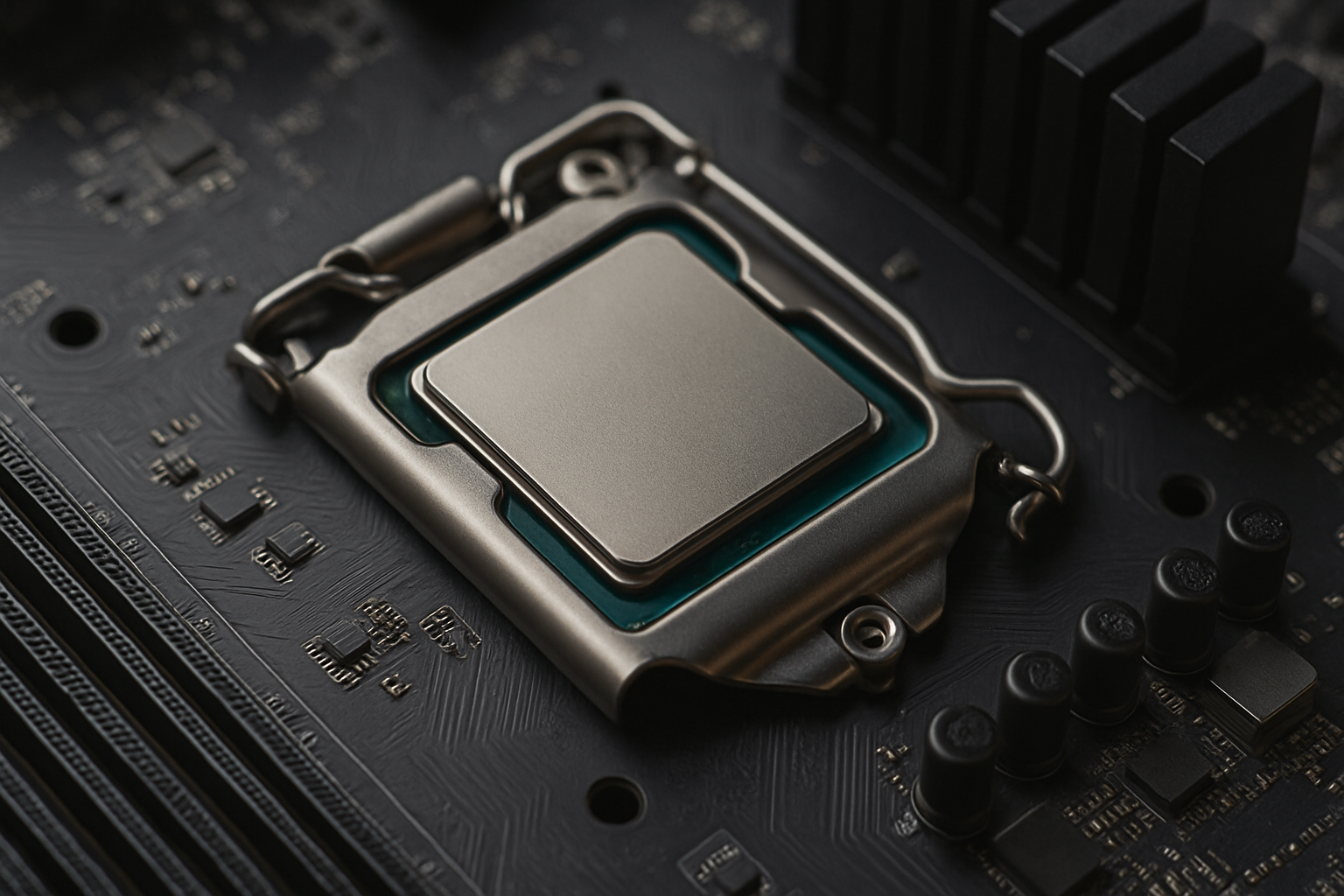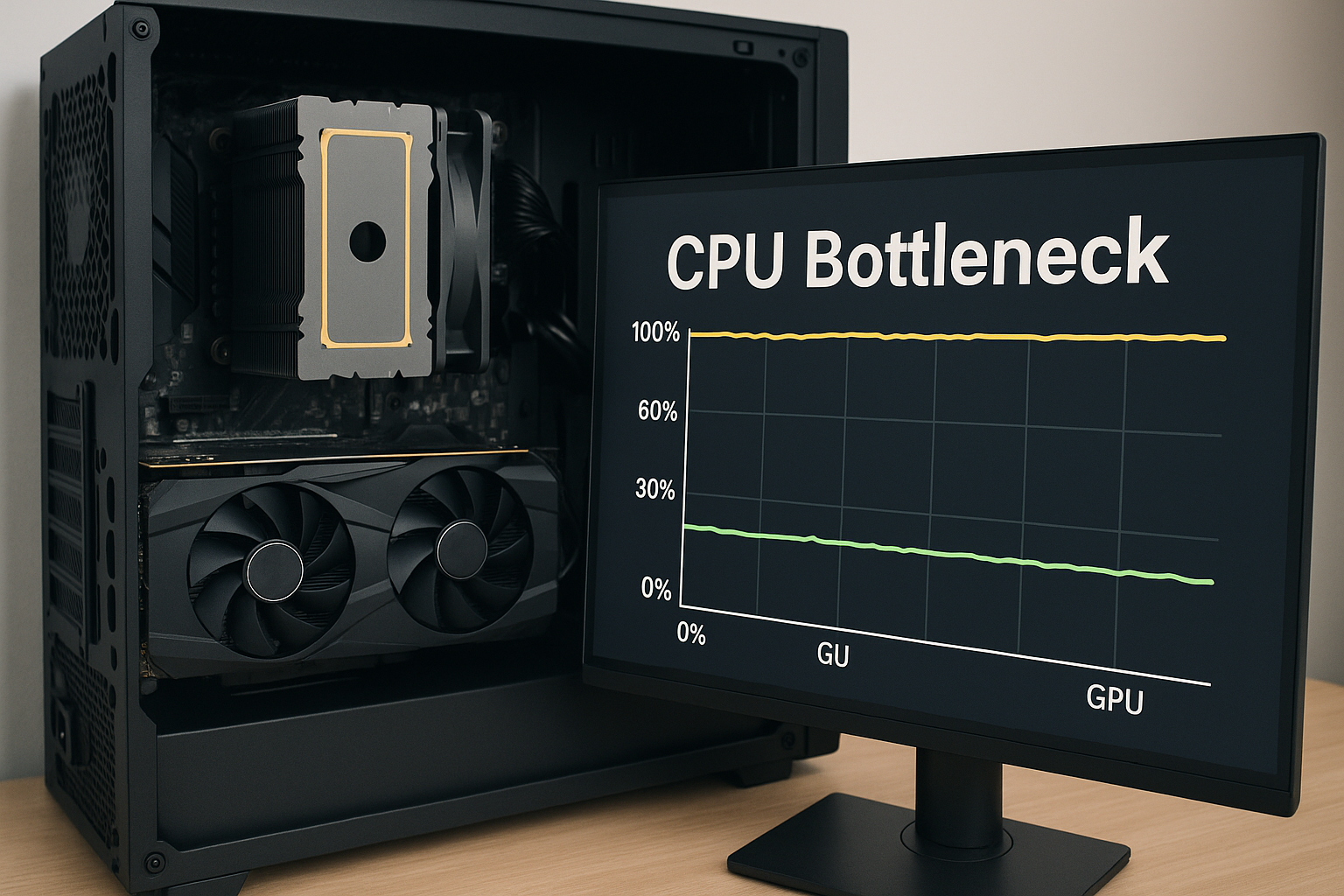
What Is CPU Bottlenecking? How to Detect and Fix It for Smoother Gaming Performance
As PC gamers strive for high frame rates and buttery-smooth visuals, hitting an unexpected performance ceiling can be frustrating — especially when you’ve invested in powerful hardware. Often, the issue isn’t with your GPU or your game settings. It’s something more subtle but just as critical: CPU bottlenecking.
CPU bottlenecking happens when your processor can’t keep up with the demands of your graphics card, leading to underwhelming performance even when you’re running a top-tier GPU. This phenomenon is especially common in systems where the CPU and GPU aren’t well matched — a problem that’s both surprisingly common and frequently misunderstood. In this article, we’ll explain what CPU bottlenecking is, how to recognize it, and how to fix it or prevent it altogether.
Understanding CPU Bottlenecking
At its core, CPU bottlenecking occurs when your processor limits your system’s ability to perform at its best. In a balanced PC, the CPU and GPU share the gaming workload. The CPU handles game logic, AI behavior, physics calculations, and other background tasks, while the GPU focuses on rendering graphics and producing the visual output you see on screen.

However, if your CPU is significantly weaker or outdated compared to your GPU, it becomes the system's weakest link. This mismatch can result in the graphics card waiting on the CPU to process instructions before it can render new frames. In other words, your GPU is sitting idle when it should be working — and that’s wasted performance.
Symptoms of CPU Bottlenecking
Detecting a bottleneck isn’t always straightforward, but there are several signs that point to your CPU being the limiting factor in your system.
One of the most reliable indicators is low GPU usage during gameplay. If your graphics card is consistently operating below 80% while your CPU is maxed out at 90–100%, it’s a classic sign that the processor is the bottleneck.

Another telltale symptom is frame stuttering or micro-lag. Even if your average FPS seems acceptable, the game may feel jerky or unresponsive — especially in complex scenes where the CPU workload increases.
You might also notice that certain games perform worse than expected, especially those that are more CPU-intensive. Titles like "Cities: Skylines," "Microsoft Flight Simulator," or massive multiplayer games tend to rely more on CPU performance than GPU rendering power, making bottlenecks more apparent.
Common Causes of CPU Bottlenecking
There are a few common situations that can lead to CPU bottlenecks:
-
Mismatched Hardware: Pairing a high-end GPU (e.g., RTX 4080) with a low-tier or old CPU (e.g., Intel i5-7400) is a recipe for bottlenecking.
-
Background Tasks: Running heavy software or multiple applications in the background can tax your CPU and interfere with gaming performance.
-
High Game Settings on CPU-Heavy Features: Some graphical features, such as view distance, shadows, and real-time physics, are handled more by the CPU than the GPU.
-
Outdated BIOS or Drivers: Poor optimization at the system level can worsen bottlenecking by not allowing the CPU to function as efficiently as possible.

Fixing CPU Bottlenecks: Practical Solutions
While bottlenecks sound serious, they don’t always require a full CPU upgrade to solve. There are several strategies you can use to reduce or eliminate the issue:
Adjust In-Game Settings
Lower CPU-dependent settings like draw distance, ambient occlusion, physics, or dynamic shadows. This reduces the load on the CPU and helps the GPU stay busy rendering frames instead of waiting around.
Close Unnecessary Background Processes
Before you launch a game, shut down apps running in the background — especially web browsers, update managers, and services like Discord overlays or streaming tools unless needed.
Enable Game Mode and Hardware-Accelerated GPU Scheduling
In Windows 10/11, Game Mode can optimize system resources, while Hardware-Accelerated GPU Scheduling can shift some tasks from the CPU to the GPU, helping balance the load more efficiently.
Update BIOS, Drivers, and Chipset Software
Sometimes, performance limitations come from out-of-date motherboard firmware or drivers. Make sure your CPU and motherboard firmware are up to date for optimal compatibility and performance.
Overclock Your CPU (If Safe)
If you have a CPU and motherboard that support overclocking, and you’re using adequate cooling, overclocking can boost your processor’s performance.
Upgrade Your CPU
If your CPU is several generations behind and you’ve exhausted other options, it may be time for an upgrade. Choose a processor that pairs well with your GPU — at least 6 cores/12 threads for modern gaming.

Preventing Bottlenecks in Future Builds
If you’re planning a new build or upgrading your current system, you can avoid CPU bottlenecks entirely by following a few key practices:
-
Match Your GPU and CPU Tiers: Check online benchmarks or use bottleneck calculators to determine if your components are compatible in performance.
-
Choose CPUs with Headroom: Opt for CPUs with more cores/threads and higher clock speeds if you plan to game, stream, or multitask.
-
Plan for the Games You Play: CPU requirements vary greatly. Know whether the games you enjoy lean heavily on CPU power.
-
Future-Proofing: Buying a slightly better CPU now can extend the life of your build and ensure smoother performance as games become more demanding.
Final Thoughts
CPU bottlenecking is one of the most overlooked causes of poor gaming performance, but once you understand it, it’s often easy to diagnose and fix. Whether it’s adjusting settings, tweaking system software, or making smarter upgrade choices, you can take control and unlock your PC’s full potential.
By ensuring your CPU and GPU are working in harmony, you’ll not only boost frame rates — you’ll enjoy a smoother, more immersive gaming experience that makes the most of your investment.

